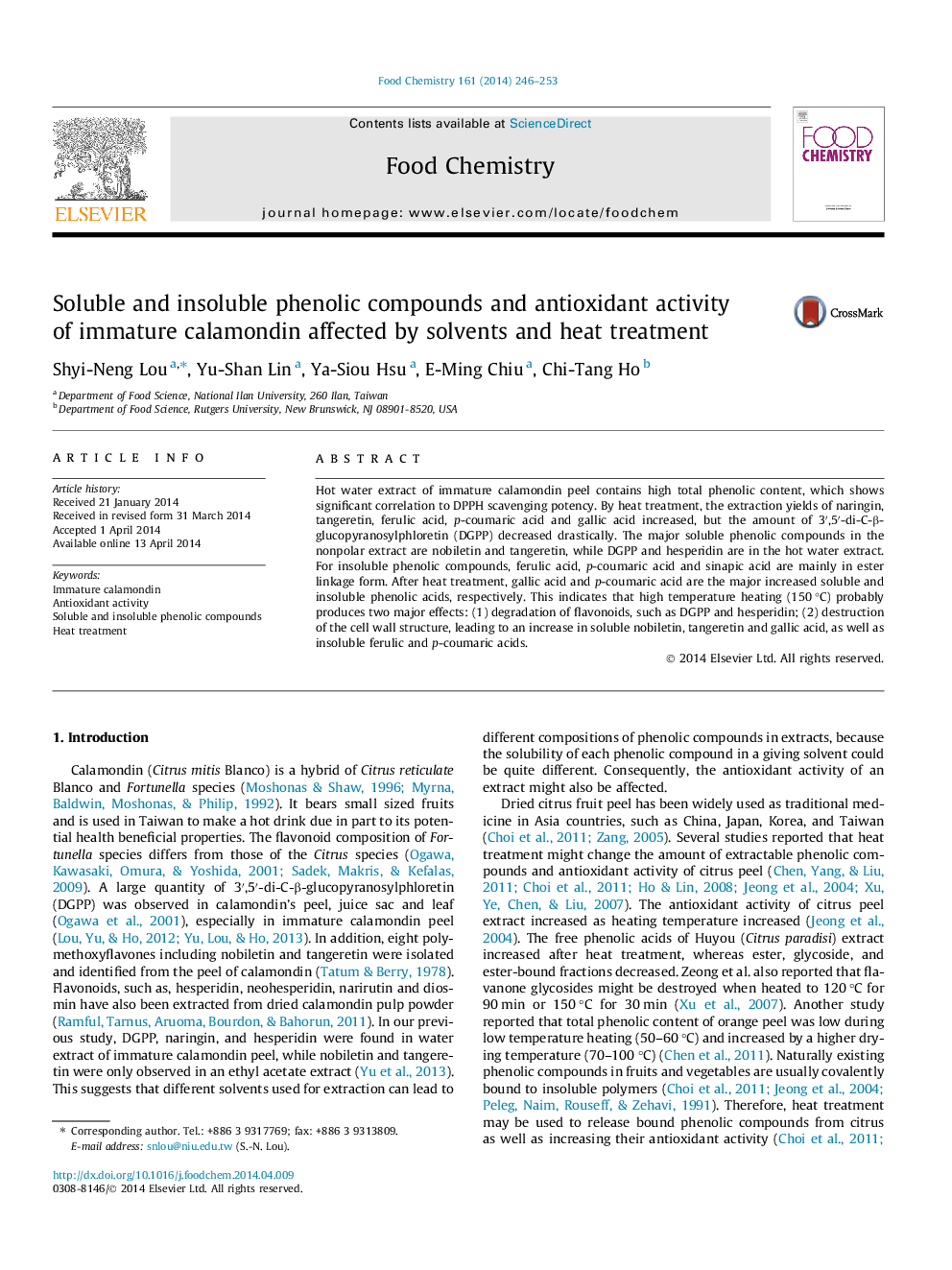| Article ID | Journal | Published Year | Pages | File Type |
|---|---|---|---|---|
| 7597111 | Food Chemistry | 2014 | 8 Pages |
Abstract
Hot water extract of immature calamondin peel contains high total phenolic content, which shows significant correlation to DPPH scavenging potency. By heat treatment, the extraction yields of naringin, tangeretin, ferulic acid, p-coumaric acid and gallic acid increased, but the amount of 3â²,5â²-di-C-β-glucopyranosylphloretin (DGPP) decreased drastically. The major soluble phenolic compounds in the nonpolar extract are nobiletin and tangeretin, while DGPP and hesperidin are in the hot water extract. For insoluble phenolic compounds, ferulic acid, p-coumaric acid and sinapic acid are mainly in ester linkage form. After heat treatment, gallic acid and p-coumaric acid are the major increased soluble and insoluble phenolic acids, respectively. This indicates that high temperature heating (150 °C) probably produces two major effects: (1) degradation of flavonoids, such as DGPP and hesperidin; (2) destruction of the cell wall structure, leading to an increase in soluble nobiletin, tangeretin and gallic acid, as well as insoluble ferulic and p-coumaric acids.
Keywords
Related Topics
Physical Sciences and Engineering
Chemistry
Analytical Chemistry
Authors
Shyi-Neng Lou, Yu-Shan Lin, Ya-Siou Hsu, E-Ming Chiu, Chi-Tang Ho,
